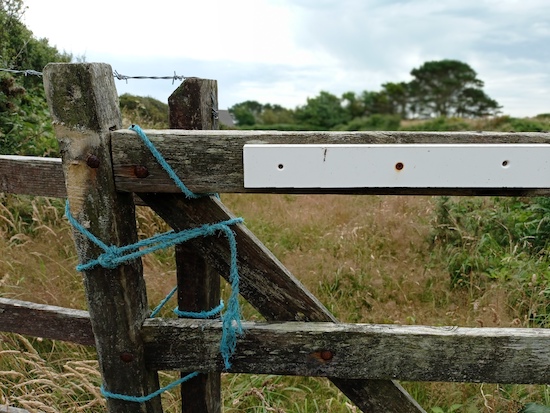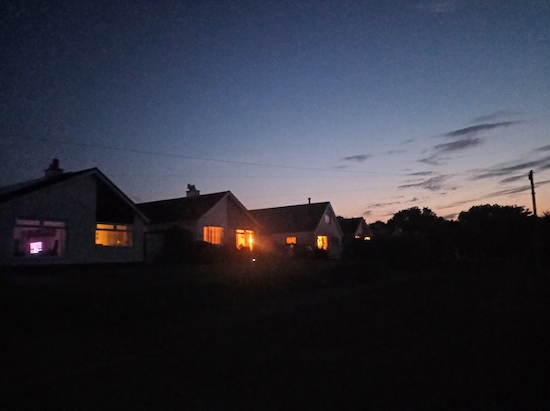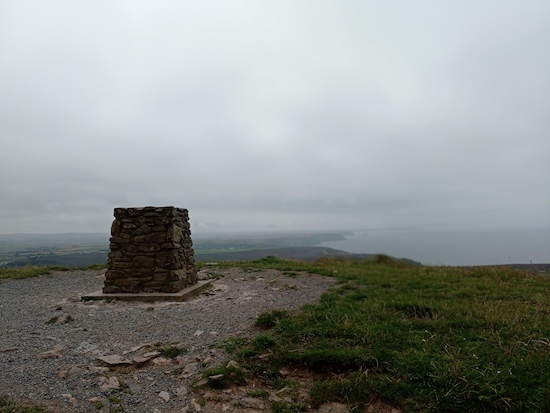images courtesy Kemper Norton
There’s something both eerie and electric about the potential of spotting something unidentified in the sky. It’s a little bit scary because it’s unknown, but perhaps catching a glimpse of a spot of light moving strangely through the sky or a disc-like blur on the horizon might help you discover something new. On estrenyon, Cornish musician Kemper Norton unpacks what it might be like to see a UFO, both metaphorically and literally. The wistful tracks he writes find inspiration in a variety of recent and past sightings around Cornwall. They exist in a space of uncertainty, illuminating feelings the way they’re felt instead of presenting objective snapshots of the experiences themselves.
This is common thematic material for Norton, whose music often explores ideas related to the supernatural, to place and history, especially drawing from his own surroundings in the South-West of England. Sonically, he tends to blend multiple genres, drawing from folk traditions as well as ambient and electronic music. This shapeshifting style can be heard again on his new release, estrenyon.
The album, whose title loosely translates to “outsiders” in Cornish, is made of wafting music that drifts with ease between simple melodies and pulsating drones. Every element and theme Norton presents acts like a jumping-off point to investigate something deeper. Throughout the album, the idea of the “outsider” is explored in various ways, permeating through his uncanny music. Each track exists in a space of precariousness, never quite settling down. Instead, the music simulates the feeling of what it might be like to see something or to feel something unidentifiable, and what it might feel like to go on living afterwards.
Each track on estrenyon conjures memories of past UFO sightings across Cornwall, using titles broadly directed towards particular cities and years (such as ‘Sennen 1950’ or ‘St Agnes 2021’). But instead of painting detailed images of what those historical sightings may have been like, Norton never quite defines the music’s edges.
Opener ‘Morwenstow 1888’, which moves through three parts, showcases this haziness with large, wavelike shifts in texture. At first, the music is suspended in time, made of a trilling piano, gently expanding electronics and distant, alien twinkles. But over time, it gets crunchier, made of far darker buzzes and a swarm of whispering voices, until rolled piano melodies re-enter alongside drifting electronics and an echoing beat. There’s a general feeling of futurism, driven by the sense that the music exists between worlds – not quite present, yet not quite from outer space either. Instead, Norton is content to exist in-between, as if he’s treading water in a channel that connects two places.

Other tracks on the album do feel more rooted in a specific place. But instead of creating a picture of the present, Norton conjures memories of those places. It’s akin to looking at a photograph. There’s a memory of a time in your hand, yet you can’t ever go back and visit that place the same way again. It’s as if you’re outside of that memory despite having lived it.
This feeling comes to life on ‘St Agnes 2021’, which is a field recording track. Ocean waves, gusts of wind and distant seagull croaks all filter through the piece, forming an image of a day in a coastal town (a little like Luc Ferrari’s ‘Presque Rien: le lever du jour au bord de la mer’). It holds steady, like sitting on a bench and people watching. With that feeling of observation, too, there’s an idea of the outsider looking in. As we listen, we’re watching the day go by, noticing our surroundings and listening to them, but never actually experiencing them materially. Instead, we listen to the sound float by, imagining how that day could have been.

Estrenyon’s most compelling moments come when the music exists not only in the apprehension that comes right before transformation, but when the sound itself goes through moments of transition. Much of the album tries to illuminate the aftermath of experiencing a seismic shift, of what’s left once a moment begins to disappear. But at points, the music itself goes through changes, reflecting both on the aftermath and the actual occurrence. ‘Sennen 1950’, which is one of the album’s most moving tracks, exemplifies this motion.
The track opens with a sparkling drone that crescendos as sparkles swirl around it. It feels stormy, made of plumes of ever-increasing sound. But then a gentle, melancholy piano enters with a repeating chord, completely changing the track’s sonic palette from tumultuous to delicate. By showing not only uncertainty, but the journey out of and into it, Norton paints a picture of what it feels like to be on the outside searching for a way in.
Much of estrenyon’s sprawling music feels distant, as if it’s a memory of a time when we experienced a major life shift that’s far past, a reflection more than something present. The idea of a UFO sighting is a fitting concept for these deeper themes. Hidden within the music is a meditation on what it feels like to exist between that which is real and that which is imagined, or that which is present and that which is long gone. In turn, this music gives us space to experience our own in-between, our own momentous life memories that eventually became something we never could have anticipated.
estrenyon by Kemper Norton is released by zonawatusa


